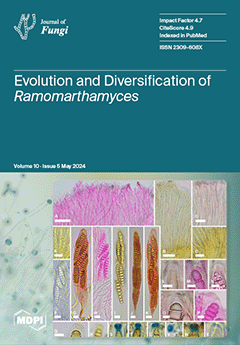Seed infection caused by
Fusarium spp. is one of the major threats to the seed quality and yield of agricultural crops, including garden peas. The use of
Bacillus spp. with multiple antagonistic and plant growth-promoting (PGP) abilities represents a potential disease control strategy. This study was performed to evaluate the biocontrol potential of new
Bacillus spp. rhizosphere isolates against two
Fusarium strains affecting garden peas. Six
Bacillus isolates identified by 16S rDNA sequencing as
B. velezensis (B42),
B. subtilis (B43),
B. mojavensis (B44, B46),
B. amyloliquefaciens (B50), and
B. halotolerans (B66) showed the highest in vitro inhibition of
F. proliferatum PS1 and
F. equiseti PS18 growth (over 40%). The selected
Bacillus isolates possessed biosynthetic genes for endoglucanase (B42, B43, B50), surfactin (B43, B44, B46), fengycin (B44, B46), bacillomycin D (B42, B50), and iturin (B42), and were able to produce indole-3-acetic acid (IAA), siderophores, and cellulase. Two isolates,
B. subtilis B43 and
B. amyloliquefaciens B50, had the highest effect on final germination, shoot length, root length, shoot dry weight, root dry weight, and seedling vigor index of garden peas as compared to the control. Their individual or combined application reduced seed infection and increased seed germination in the presence of
F. proliferatum PS1 and
F. equiseti PS18, both after seed inoculation and seed bio-priming. The most promising results were obtained in the cases of the bacterial consortium, seed bio-priming, and the more pathogenic strain PS18. The novel
Bacillus isolates may be potential biocontrol agents intended for the management of
Fusarium seed-borne diseases.
Full article






